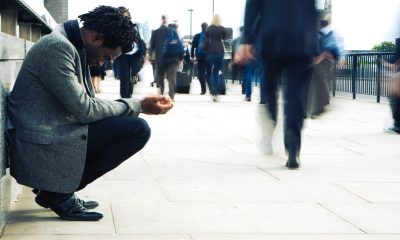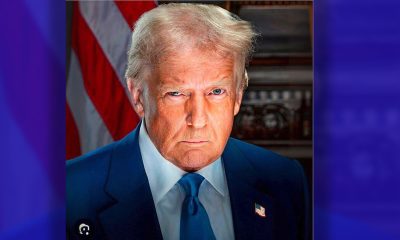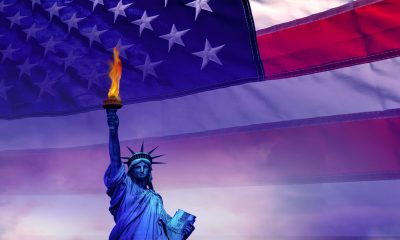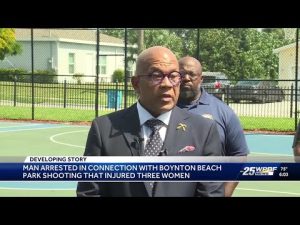#NNPA BlackPress
COMMENTARY: COVID-19, the View Across Black America
NNPA NEWSWRE — While Washington, D.C.’s Metrorail has been largely emptied of its professional class of passengers, reductions in the city’s bus service have made it difficult for its darker and poorer customers—many of whom work in government jobs considered “essential” or the service sector and either do not have sick pay or cannot afford to take the day off—to practice social distancing on buses teeming with riders. Near the end of March, a Metrobus driver tested positive for the virus.
By Jon Jeter, The Minnesota Spokesman-Recorder
Similar to Hurricane Katrina 15 years ago, the global coronavirus pandemic is shining a light on America’s racial fault lines. By whatever trope you choose to deploy—“last hired, first fired,” “When White America catches a cold, Black America has the flu,” or “Your Blues ain’t like mine” — People of Color generally, and the 42 million descendants of chattel slaves, specifically, will experience this almost Biblical scourge in ways that are very different from Whites.
A nurse reports that White nurses began disappearing from her central New Jersey hospital around the first week of March, applying for vacation and leaves of absence just as the number of coronavirus cases in the U.S. was beginning to skyrocket.
As the hospital admitted more and more infected patients, they announced that all time-off requests would be denied, leaving mostly Black and Brown nurses to cope with the worst global health crisis in more than a century.
But that’s not all. Running short of surgical masks and hand sanitizer, a nurse at the hospital recently was exposed to a patient infected with the coronavirus; her coworkers are on pins and needles, nervously awaiting her test results.
“While most facilities like the one I work at have turned away any new admissions, we’re still taking admissions,” wrote one nurse, a Latina with 15 years of experience. She surmised that hospital executives hope to profit from the growing caseload.
While Washington, D.C.’s Metrorail has been largely emptied of its professional class of passengers, reductions in the city’s bus service have made it difficult for its darker and poorer customers—many of whom work in government jobs considered “essential” or the service sector and either do not have sick pay or cannot afford to take the day off—to practice social distancing on buses teeming with riders. Near the end of March, a Metrobus driver tested positive for the novel coronavirus.
“It’s impossible to socially isolate in a sardine can,” said Rohan Edmonson, 40, who lives in the D.C. suburb of Silver Spring and works on Embassy Row.
The buses in South Florida are considerably less crowded than usual, said one African American resident, Roger Williams. After revelers and spring breakers—mostly but not entirely White —posted photographs and videos last week of large gatherings on boats and beaches, Miami-Dade County Mayor Carlos Gimenez ordered the closure of all public beaches, parks, marinas, and recreational facilities.
The measures are beginning to take: Williams said he rode his bicycle on a typically bustling roadway near his suburban Miami home last week and only encountered one vehicle on the road, a scene that is redolent of post-hurricane Florida. The challenge, however, is that “a lot of very low-income Miamians live in motels, and many are now being asked to leave because of the shutdown,” said Williams. This is “creating another crisis, since they will now add to the already striking numbers of homeless people on Miami’s streets.”
A Haitian-born American woman who works for a major healthcare provider agreed, saying that she has found that the pandemic is exacerbating problems such as homelessness and unemployment and health conditions such as diabetes. This is dramatically increasing anxiety levels for many in South Florida’s African American and Afro-Caribbean communities.
At ground zero of the U.S. pandemic, New York City, only essential services are allowed to remain open: groceries, drug stores, liquor stores, hardware stores, and restaurants that offer delivery. Grocery store shelves remain well-stocked, but cold and flu medicines are in short supply in drug stores.
In Harlem, Margaret Kimberley, an author and columnist for Black Agenda Report, wrote on Facebook: “People are riding the subway, but there are so few that you really can practice social distancing even on public transportation. I’d say half of the people I see outside are wearing masks, myself included. Some are makeshift affairs, scarves tightly tied around the mouth for example. . .
“To prevent people crowding onto buses,” Kimberley continued, “we are now allowed to enter through the back door. This is something poor people always did. Now everyone can ride for free… I got my hair braided yesterday, the last day before beauty shops had to close. I wasn’t alone, but there were a lot fewer people than you would see there on a normal Saturday. I went but wore my mask.”
Perhaps the most jarring description from Kimberley was the gallows humor that has descended on Harlem’s Black community as many discuss the Trump administration’s plans for emergency grants. “Lots of folks are out of work. People are making jokes about getting checks from Trump but I think it is no joke. Folks were struggling before this, and the $1,000 they’re expecting will come in handy.”
It is by no means strictly doom and gloom, however. Across the country, communities are banding together to help each other weather the storm.
Activists with the Community Ready Corps are distributing Corona Kits—hand sanitizer, N95 masks, and brochures—immune-boosting care packages of garlic, ginger, turmeric, lentils and oats, and even books to Oakland’s Black community focusing on the elderly, the sickly, and even stir-crazy kids.
Opened four years ago amid a food desert on Indianapolis’ east side, the Trap has pivoted sharply to a web-only eatery that is preparing to ship its shrink-wrapped healthy seafood nationwide. A retired schoolteacher in New Jersey volunteered to knit surgical masks for mostly nurses of color treating coronavirus patients at a local hospital.
Jon Jeter is a freelance journalist writer and social critic He formerly worked for several major newspapers, including the Washington Post before becoming an independent journalist.
#NNPA BlackPress
LIHEAP Funds Released After Weeks of Delay as States and the District Rush to Protect Households from the Cold
BLACKPRESSUSA NEWSWIRE — The federal government has released $3.6 billion in home heating assistance after a delay that left states preparing for the start of winter without the program’s annual funding.

By Stacy M. Brown
Black Press USA Senior National Correspondent
The federal government has released $3.6 billion in home heating assistance after a delay that left states preparing for the start of winter without the program’s annual funding. The Low-Income Home Energy Assistance Program, known as LIHEAP, helps eligible households pay heating and cooling bills. The release follows a shutdown that stretched 43 days and pushed agencies across the country to warn families of possible disruptions.
State officials in Minnesota, Kansas, New York, and Pennsylvania had already issued alerts that the delay could slow the processing of applications or force families to wait until December for help. In Pennsylvania, more than 300,000 households depend on the program each year. Minnesota officials noted that older adults, young children, and people with disabilities face the highest risk as temperatures fall.
The delay also raised concerns among advocates who track household debt tied to rising utility costs. National Energy Assistance Directors Association Executive Director Mark Wolfe said the funds were “essential and long overdue” and added that high arrearages and increased energy prices have strained families seeking help.
Some states faced additional pressure when other services were affected by the shutdown. According to data reviewed by national energy advocates, roughly 68 percent of LIHEAP households also receive nutrition assistance, and the freeze in multiple programs increased the financial burden on low-income residents. Wolfe said families were placed in “an even more precarious situation than usual” as the shutdown stretched into November.
In Maryland, lawmakers urged the Trump administration to release funds after the state recorded its first cold-related death of the season. The Maryland Department of Health reported that a man in his 30s was found outdoors in Frederick County when temperatures dropped. Last winter, the state documented 75 cold-related deaths, the highest number in five years. Rep Kweisi Mfume joined more than 100 House members calling for immediate federal action and said LIHEAP “is not a luxury” for the 100,000 Maryland households that rely on it. He added that seniors and veterans would be placed at risk if the program remained stalled.
Maryland Gov. Wes Moore used $10.1 million in state funds to keep benefits moving, but noted that states cannot routinely replace federal dollars. His administration said families that rely on medical equipment requiring electricity are particularly vulnerable.
The District of Columbia has already mapped out its FY26 LIHEAP structure in documents filed with the federal government. The District’s plan shows that heating assistance, cooling assistance, weatherization, and year-round crisis assistance operate from October 1 through September 30. The District allocates 50 percent of its LIHEAP funds to heating assistance, 10 percent to cooling, 13 percent to year-round crisis assistance, 15 percent to weatherization, and 10 percent to administrative costs. Two percent is used for services that help residents reduce energy needs, including education on reading utility bills and identifying energy waste.
The District’s plan lists a minimum LIHEAP benefit of $200 and a maximum of $1,800 for both heating and cooling assistance. Crisis benefits are provided separately and may reach up to $500 when needed to resolve an emergency. The plan states that a household is considered in crisis if it has been disconnected from energy service, if heating oil is at 5 percent or less of capacity, or if the household has at least $200 owed after the regular benefit is applied.
The District’s filing notes that LIHEAP staff conduct outreach through community meetings, senior housing sites, Advisory Neighborhood Commissions, social media, posters, and mass mailings. The plan confirms that LIHEAP applicants can apply in person, by mail, by email, or through a mobile-friendly online application and that physically disabled residents may request in-home visits.
As agencies nationwide begin distributing the newly released funds, states continue working through large volumes of applications. Wolfe said LIHEAP administrators “have been notified that the award letters have gone out and the states can begin to draw down the funds.”
#NNPA BlackPress
Seven Steps to Help Your Child Build Meaningful Connections
BLACKPRESSUSA NEWSWIRE — Swinging side by side with a friend on the playground. Sharing chalk over bright, colorful sidewalk drawings. Hiding behind a tree during a spirited game of hide-and-seek. These simple moments between children may seem small, but they matter more than we think

By Niyoka McCoy, Ed.D., Chief Learning Officer, Stride/K12
Swinging side by side with a friend on the playground. Sharing chalk over bright, colorful sidewalk drawings. Hiding behind a tree during a spirited game of hide-and-seek. These simple moments between children may seem small, but they matter more than we think: They lay the foundation for some of life’s most important skills.
Through everyday play, young children begin learning essential social and emotional skills like sharing, resolving conflicts, showing empathy, and managing their emotions. These social skills help shape emotional growth and set kids up for long-term success. Socialization in early childhood isn’t just a “nice-to-have”—it’s essential for development.
Yet today, many young children who haven’t yet started school aren’t getting enough consistent, meaningful interaction with peers. Research shows that there’s a decline in active free play and peer socialization when compared to previous generations.
There are many reasons for this. Children who are home with a parent during the day may spend most of their time with adults, limiting opportunities for peer play. Those in daycare or preschool may have restricted free play, and large classrooms can reduce supervision and social coaching. Some children live in rural areas, are homebound due to illness, have full schedules, or rely on screens to fill their playtime. And for some families, finding other families with young children to connect with isn’t easy.
While these challenges can feel significant, opportunities for connection still exist in every community. Families can take simple steps to help children build friendships, create a sense of belonging, and strengthen social skills. Here are some ideas to get started:
- Storytime sessions at libraries or local bookstores
- Community offerings such as parent-child workshops, art, music, gymnastics, swimming, or sports programs
- Weekly events at children’s museums, which may include art projects, music workshops, or science experiments
- Outdoor exploration, where kids can play with peers
- Local parenting groups that organize playdates and group activities
- Volunteer opportunities where children can participate, such as pet adoption events or packing meals at a food bank
- Classes for kids at local businesses, including hardware, grocery, or craft stores
Some of these community activities are free or low-cost and give kids the chance to build friendships and practice social skills. Parents can also model positive social behavior by interacting with other parents and encouraging their children to play with their peers.
These may seem like small moments of connection, but they can have a powerful impact. Every time your child shares a toy, plays make-believe with peers, or races a friend down the slide, they’re not just playing—they’re learning the skills that build confidence, empathy, and lasting friendships. And it’s good for you, too. Creating intentional opportunities for play also helps you strengthen your own network of parents who can support one another as your children grow together.
#NNPA BlackPress
Seven Steps to Help Your Child Build Meaningful Connections
BLACKPRESSUSA NEWSWIRE — Swinging side by side with a friend on the playground. Sharing chalk over bright, colorful sidewalk drawings. Hiding behind a tree during a spirited game of hide-and-seek. These simple moments between children may seem small, but they matter more than we think
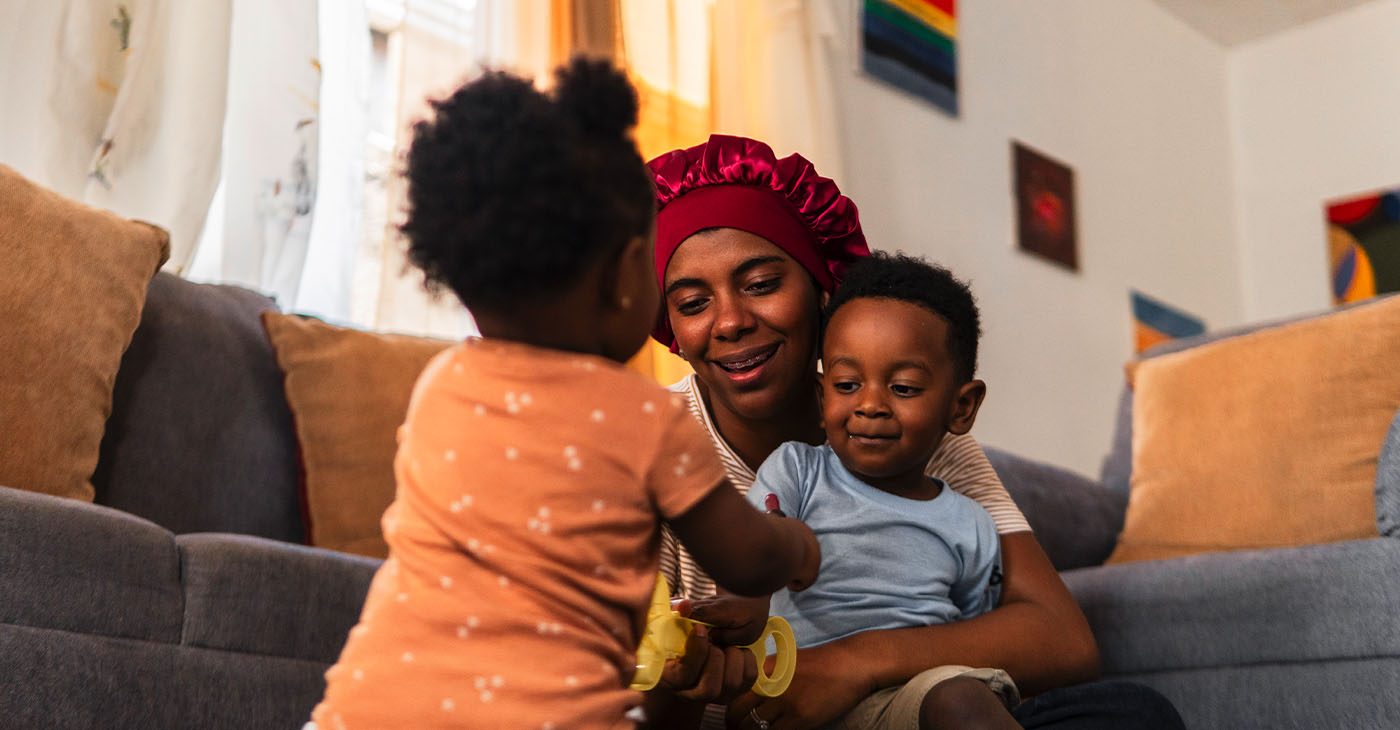
By Niyoka McCoy, Ed.D., Chief Learning Officer, Stride/K12
Swinging side by side with a friend on the playground. Sharing chalk over bright, colorful sidewalk drawings. Hiding behind a tree during a spirited game of hide-and-seek. These simple moments between children may seem small, but they matter more than we think: They lay the foundation for some of life’s most important skills.
Through everyday play, young children begin learning essential social and emotional skills like sharing, resolving conflicts, showing empathy, and managing their emotions. These social skills help shape emotional growth and set kids up for long-term success. Socialization in early childhood isn’t just a “nice-to-have”—it’s essential for development.
Yet today, many young children who haven’t yet started school aren’t getting enough consistent, meaningful interaction with peers. Research shows that there’s a decline in active free play and peer socialization when compared to previous generations.
There are many reasons for this. Children who are home with a parent during the day may spend most of their time with adults, limiting opportunities for peer play. Those in daycare or preschool may have restricted free play, and large classrooms can reduce supervision and social coaching. Some children live in rural areas, are homebound due to illness, have full schedules, or rely on screens to fill their playtime. And for some families, finding other families with young children to connect with isn’t easy.
While these challenges can feel significant, opportunities for connection still exist in every community. Families can take simple steps to help children build friendships, create a sense of belonging, and strengthen social skills. Here are some ideas to get started:
- Storytime sessions at libraries or local bookstores
- Community offerings such as parent-child workshops, art, music, gymnastics, swimming, or sports programs
- Weekly events at children’s museums, which may include art projects, music workshops, or science experiments
- Outdoor exploration, where kids can play with peers
- Local parenting groups that organize playdates and group activities
- Volunteer opportunities where children can participate, such as pet adoption events or packing meals at a food bank
- Classes for kids at local businesses, including hardware, grocery, or craft stores
Some of these community activities are free or low-cost and give kids the chance to build friendships and practice social skills. Parents can also model positive social behavior by interacting with other parents and encouraging their children to play with their peers.
These may seem like small moments of connection, but they can have a powerful impact. Every time your child shares a toy, plays make-believe with peers, or races a friend down the slide, they’re not just playing—they’re learning the skills that build confidence, empathy, and lasting friendships. And it’s good for you, too. Creating intentional opportunities for play also helps you strengthen your own network of parents who can support one another as your children grow together.
-
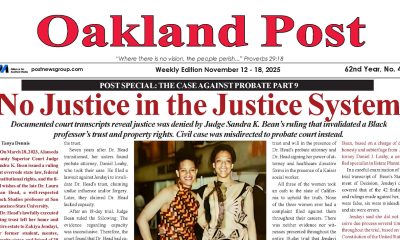
 Activism3 weeks ago
Activism3 weeks agoOakland Post: Week of November 12 – 18, 2025
-
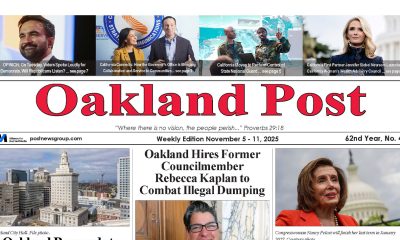
 Activism4 weeks ago
Activism4 weeks agoOakland Post: Week of November 5 – 11, 2025
-
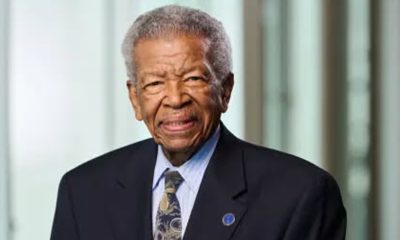
 Activism2 weeks ago
Activism2 weeks agoIN MEMORIAM: William ‘Bill’ Patterson, 94
-

 Activism3 weeks ago
Activism3 weeks agoHow Charles R. Drew University Navigated More Than $20 Million in Fed Cuts – Still Prioritizing Students and Community Health
-

 #NNPA BlackPress3 weeks ago
#NNPA BlackPress3 weeks agoThe Perfumed Hand of Hypocrisy: Trump Hosted Former Terror Suspect While America Condemns a Muslim Mayor
-

 Bay Area3 weeks ago
Bay Area3 weeks agoNo Justice in the Justice System
-

 #NNPA BlackPress3 weeks ago
#NNPA BlackPress3 weeks agoProtecting Pedophiles: The GOP’s Warped Crusade Against Its Own Lies
-
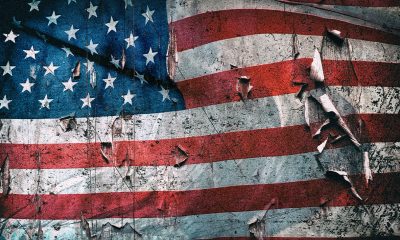
 #NNPA BlackPress2 weeks ago
#NNPA BlackPress2 weeks agoTrump’s Death Threat Rhetoric Sends Nation into Crisis



